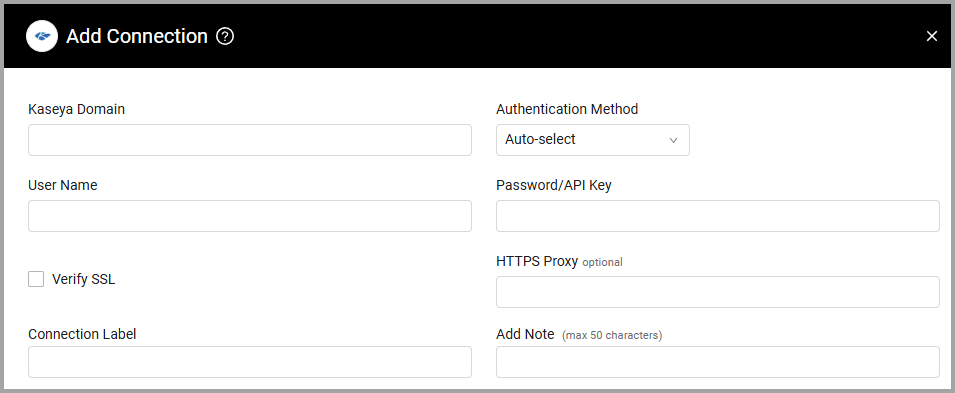Kaseya VSA
Kaseya VSA is a remote monitoring and management solution for remote control, discovery, patch management, and monitoring.
Types of Assets Fetched
This adapter fetches the following types of assets:
- Devices
- Software
- SaaS Applications
Parameters
- Kaseya Domain (required) - The hostname of the Kaseya server. The format of this field is '[instance].kaseya.net'.
- Authentication Method (required, default: Auto-select) - Select the relevant authentication method. If not selected, 'Auto-select' will attempt to authenticate by Password and API Key. The following authentication methods are available:
- Auto-select
- User Name and Password
- User Name and API Key
- User Name and Password/API Key (required) - The credentials for a user account that has the permissions to fetch assets. Use either a Password or an API Key, as selected in the Authentication Method. The user and password/API Key must be for a Kaseya VSA admin.
- Verify SSL - Select whether to verify the SSL certificate offered by the value supplied in Kaseya Domain. For more details, see SSL Trust & CA Settings.
- HTTPS Proxy (optional) - A proxy to use when connecting to the value supplied in Kaseya Domain.
To learn more about common adapter connection parameters and buttons, see Adding a New Adapter Connection.

Advanced Settings
Note
Advanced settings can either apply to all connections for this adapter, or to a specific connection. Refer to Advanced Configuration for Adapters.
- Disable paginated requests - Select this option to avoid using paginated API requests. If cleared, Axonius will attempt to use paginated API calls to fetch data.
- Include assets missing agent data - Select this option to include assets that are missing agent data.
- Enrich devices with software (default: true) - By default this adapter enriches devices with software. Toggle off to not enrich devices with software.
- Enrich devices with group members (default: true) - By default this adapter enriches devices with group members. Toggle off to not enrich devices with group members.
Note
To learn more about Adapter Configuration tab advanced settings, see Adapter Advanced Settings.
Updated 1 day ago
